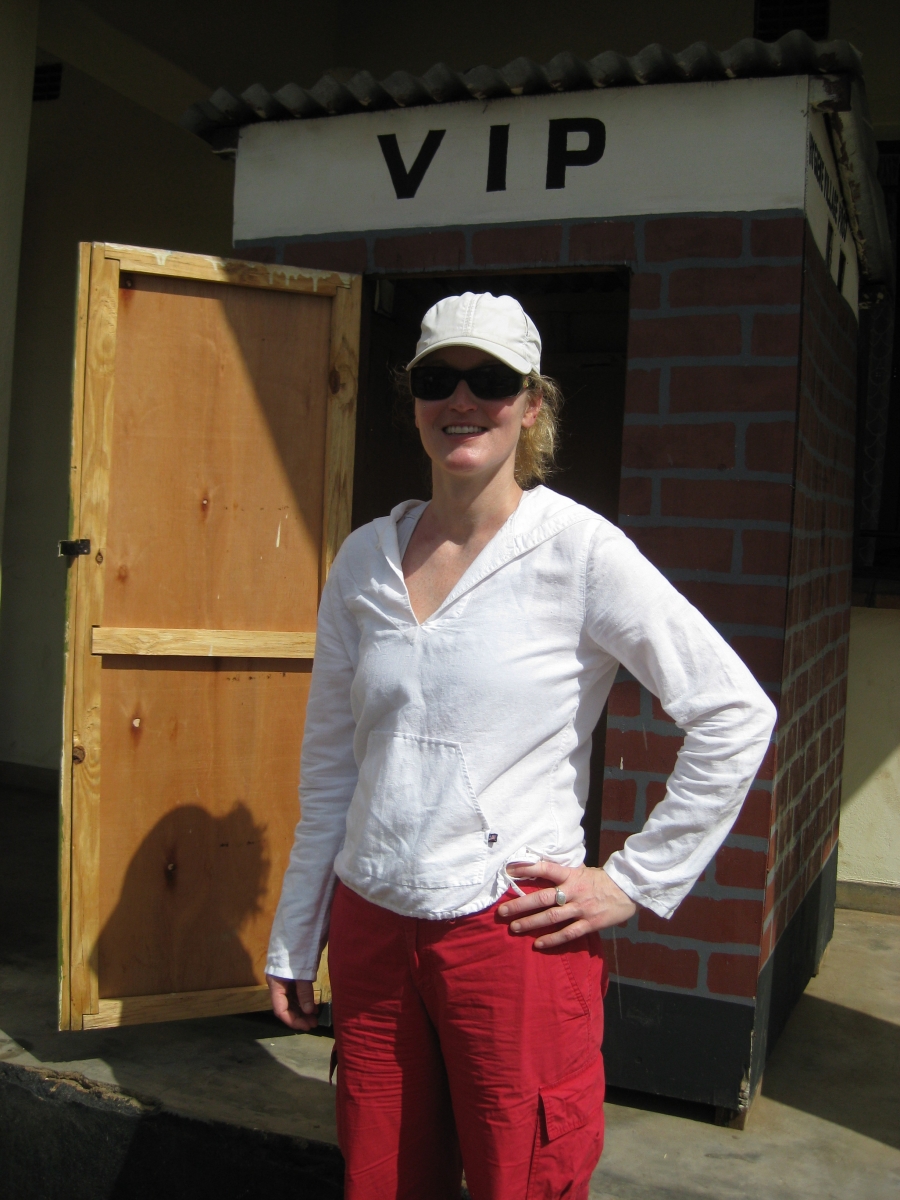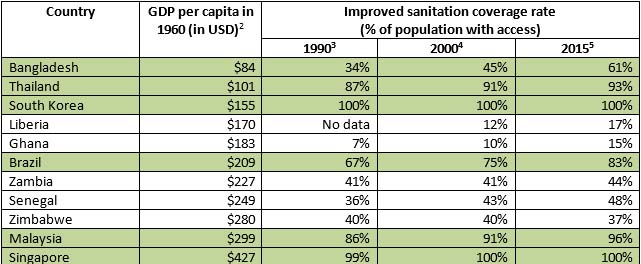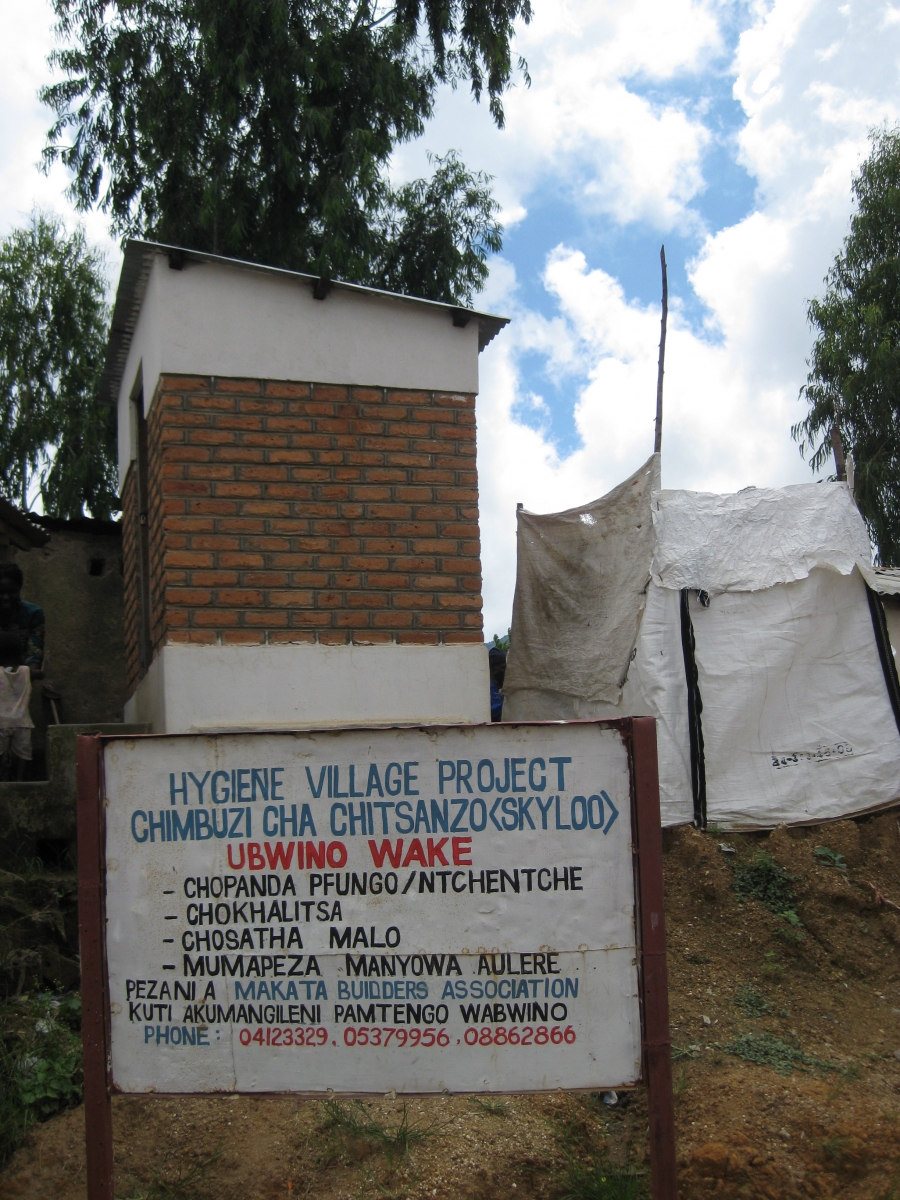Reasons to be realistic and optimistic about achieving universal sanitation
|
I know of at least two toilet museums (a toilet shaped one in South Korea and Sulabh International Museum of Toilets in India). It would be great if, like many museums, they were just documenting the history of a problem that was solved long ago. But the world missed the global sanitation targets under the Millennium Development Goals.
In my role at Improve International, I often feel like a Negative Nelly, because I highlight the challenges faced by the water and sanitation sector. So at the beginning of this new year (at least for this blog), I will try being a Positive Polly. It's good timing, as 2016 is also the year we embark on the journey to Sustainable Development Goal 6, “Ensure access to water and sanitation for all.”
for this blog), I will try being a Positive Polly. It's good timing, as 2016 is also the year we embark on the journey to Sustainable Development Goal 6, “Ensure access to water and sanitation for all.”
For a recent research project for CRS, I felt like an archaeologist, trying to dig up evidence of long-term sanitation successes. Based on what we found, I believe universal sanitation is achievable.
Depending on where you live, you might be experiencing 100% national coverage right in your own house. (Full disclosure: I live in the US and I have one toilet in my home. TMI: It isn't always as clean as it should be.) If you live in the US, have you been anywhere lately (besides Manhattan) where you couldn't easily find a toilet, and handwashing facilities? So how did that happen? Governments of developing countries who still have a way to go toward universal coverage and NGOs who work there can learn from the successes of other countries.
Examples of sanitation achievements that are well documented include Bangladesh, Brazil, Malaysia, Singapore, South Korea, and Thailand. While some consider these countries to be more developed, the gross domestic products (GDP) per capita in 1960 for Bangladesh, South Korea, and Thailand, for example, were lower than those of Ghana, Liberia, Senegal, Zambia, and Zimbabwe. Singapore seems like a totally modern city now, but in the 1960s, it was a “polluted, congested city where open defecation was rampant.”
Examples of GDP and national improved sanitation coverage trajectories [1]

And while the lowest levels of sanitation coverage are found in the least developed countries, particularly those in sub-Saharan Africa, Ethiopia kicked butt. They achieved the largest decrease in the proportion of the population practicing open defecation (from 92% in 1990 to 29% in 2015).
From these countries we can see that universal sanitation starts with political will and leadership, along with adequate funding, cooperation and coordination, affordable technology, and development of sustained local capacity. We are also starting to accept that a long-term drive (i.e., decades) toward a cultural shift is required to raise awareness and change behavior. These are things that are difficult to do (especially for project-oriented NGOs) and harder to measure. But we need to get past the “Build more cheap latrines!” mentality. Sanitation does not solely refer to containment of feces. Toilets are only one element in an entire sanitation system, which should include collection, transport, treatment, and use of excreta. And a crappy toilet (literally or figuratively - i.e., low quality) can be worse than no toilet at all.

Before and after latrines in a suburb of Blantyre, Malawi.
What can you do to help the countries that are already “there” and those that aren't there yet? If you work for an NGO, your organization could help promote:
- Consideration of menstrual hygiene
- Promotion of hygienic use of toilets, especially with access to water for cleaning and handwashing
- Helping to link users with finances and services for pit emptying or building new latrines, as well as upgrading their services
- Help communities with animal excreta management, solid waste management, and managing young children's feces.
It feels good to be optimistic, but realistic. We need to learn from the past, question the build on the good, and resolve the bad. Join me soon after 2030 at the “Museum of How We Got to Universal Sanitation.” I hear they'll have a great coffee shop.
Some Resources:
Bangladesh: Sustainability and equity aspects of total sanitation programmes: A study of recent WaterAid-supported programmes in Bangladesh, Community-Led Total Sanitation in Rural Areas: An Approach That Works, Lessons Learned from Bangladesh, India, and Pakistan: Scaling-Up Rural Sanitation in South Asia, Community Led Total Sanitation in Bangladesh: Chronicles of a Peoples Movement, Citizen's report on sanitation
Brazil: Community-driven sanitation improvement in deprived urban neighbourhoods, Low-cost Sanitation Improvements in Poor Communities: Conditions for Physical Sustainability, The Experience of Condominial Water and Sewerage Systems in Brazil: Case Studies from Brasilia, Salvador and Parauapebas
Malaysia: Successful Sanitation Projects in Thailand, Malaysia, and Singapore, Achieving total sanitation and hygiene coverage within a generation - lessons from East Asia
Singapore: Successful Sanitation Projects in Thailand, Malaysia, and Singapore, Achieving total sanitation and hygiene coverage within a generation - lessons from East Asia, 50 years of sanitation in Singapore
South Korea: Achieving total sanitation and hygiene coverage within a generation - lessons from East Asia
Thailand: Achieving total sanitation and hygiene coverage within a generation - lessons from East Asia; Successful Sanitation Projects in Thailand, Malaysia, and Singapore, Evaluating the effectiveness of public finance for household sanitation in rural Thailand, Universal Sanitation - Thailand Experiences
United States: The Sanitary City: Environmental Services in Urban America from Colonial Times to the Present, City Water, City Life: Water and the Infrastructure of Ideas in Urbanizing Philadelphia, Boston, and Chicago, The Cholera Years
World: The Big Necessity
Footnotes:
[1] Table adapted from Northover, H., Ryu, S., & Brewer, T., 2015. Achieving total sanitation and hygiene coverage within a generation - lessons from East Asia. London: WaterAid.
[2] World Bank Data 1960 GDP per capita, data for Bangladesh, Brazil, Malaysia, Singapore, South Korea, Thailand (accessed January 6, 2016)
[3] World Bank Data Improved sanitation facilities (% of population with access) 1986-1990
[4] World Bank Data Improved sanitation facilities (% of population with access) 1996-2000
[5] World Bank Data Improved sanitation facilities (% of population with access) 2011-2015
Photo credits: Susan Davis.














